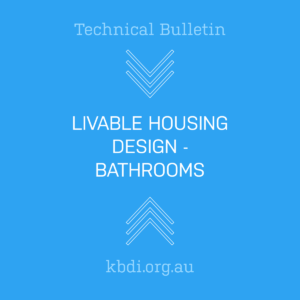The needs of Australians are diverse and will continue to change in the future as our demographics evolve; one of the most significant changes we’re anticipating in the first half of this century is the increase in older people and people with one or multiple disabilities living in private homes. To cope with this demographic change, and respond to the needs of those with a physical limitation, restriction or impairment, housing design needs to adapt.
The Australian Government has been building ‘accessible’ homes to facilitate the needs of those with a disability in the social housing sector for some time. At a federal level, they’ve also recognised the need to accommodate existing private home modifications with their National Disability Insurance Scheme (NDIS). This funded safety net has been established to provide a nationally consistent commitment to supporting people with disabilities in their everyday life, allowing greater independence and improved participation in learning and employment.
Designers who recognise and understand the needs of people with a disability, multiple disabilities or chronic illness, people recovering from illness or injury, and an ageing demographic generally, will be in demand. In this Technical Bulletin, we’ll introduce the concept of universal design, and set out the fundamentals of accessible and adaptable design, specifically in the areas of kitchens, bathrooms and laundries.




